VIII Bomber Command 171
31 December 1943
61036 AC - (A)- Boeing B-17 "Flying Fortress" of the 91st Bomb Gp. 8th AF, enroute to bomb target at Croisette, France. 1/14/44. (Altitude 12,100 feet.) Roger Freeman Collection
IWM, Roger Freeman Collection
Object Number - FRE 684 - A B-17 Flying Fortress (DF-B, serial number 42-37779) nicknamed "Pistl Packin' Mama", of the 91st Bomb Group in flight during a mission over France,...
Description
This mission is the last heavy bomber operation of 1943. 1943 had been a very "tough" year for the 8th Air Force in the European Theater of Operations (ETO). 23365 B-17s had been despatched on missions and 881 had Failed to Return (FTR) for a loss percentage of 3.77%. This loss percentage equates to only a 38.26% chance that a B-17 bomber would complete a 25-mission tour. 3,026 B-24s had been despatched on ETO missions and 92 had Failed to Return (FTR) for a loss percentage of 3.04%. This loss percentage equates to a 46.21% chance that a B-24 would complete a 25-mission tour. These 25-mission survival rates were never given to the crews, but 8th AF command was certainly aware that you had to be "a lucky bastard" to complete 25 missions
The fact that fighter escort of the bombers was not widely used until the latter months of 1943 was certainly a contributing factor in the number of aircraft that were lost. Also, the B-17 Model F was not equipped with a chin turret and the Luftwaffe quickly learned that head-on attacks could take fatal advantage of this deficiency. With the coming of the P-51 Mustang, the change in fighter tactics implmented by LGEN Doolittle, the equipping of Bomb Groups with the B-17G and the losses by the Luftwaffe of experienced fighter pilots, the course of the air war in 1944 would be quite different for the bomber crews than 1943 and devestating to the Luftwaffe.
This mission is composed of 7 smaller formation elements directed mainly German airfields in France. The strategy seems to have been that multiple smaller bomber formations directed at dispersed targets would greatly frustrate Luftwaffe attempts to intercept the bomber streams.
The first element was a force of 73 B-17s from 1st Bomb Division that included: 91BG (32); 92BG (20);and 305BG (21 - did not drop) despatched to bomb the German airfield at Bordeaux-Merignac, France. 40 aircraft are effective on the target. 5 aircraft Failed to Return (FTR) 8KIA 28POW 14EVD. 2 aircraft with battle damage made crash landings upon return to England 4KIA 16RTD. 4 airmen were KIA and another 10WIA aboard aircraft that returned. 29 aircraft were damaged. The bomber gunners in this element claimed 3-3-3 of attacking German aircraft.
The second element was a force of 102 B-17s also from 1st Bomb Division that included: 306BG (23); 351BG (31); 381BG (26); and 401BG (22) despatched to bomb the German airfield of Cognac-Chateubernard as the secondary target. 99 aircraft are effective on this target. 10 aircraft Failed to Return (FTR) 30KIA 51POW 19EVD 2RTD (rescued by ASR). 4 airmen were KIA and another 19 WIA aborad returning aircraft. 5 aircraft with battle damage made crash landings in England upon return 1KIA 49RTD. 38 aircraft were damaged. The bomber gunners in this element claimed 6-1-10 of attacking German aircraft.
The third element was a force of 61 B-17 from 3rd Bomb Division that included: 94BG (21); 385BG (20); and 447BG (20) despatched to bomb the German airfield of Cognac-Chateaubernard, Fracne. ALL 61 were effective on the target, but 3 Failed to Return (FTR) 10KIA 14POW 7EVD. 1 airman was KIA and another 5 WIA aboard returning aircraft. 36 aircraft were damaged. The bomber gunners of this element claimed 8-9-14 of attacking German aircraft.
The fourth element was a force of 60 B-24s from 2nd Bomb Division that included: 93BG (17); 446BG (25); and 448BG (18) despatched to bombe the German airfied at La Rochelle, France, but weather forced to formation to attack the German airfields at Cognac-Chateaubernard and Landes-Bussac, France. 57 aircraft are effective on these targets. 5 aircraft Failed to Return (FTR) 30KIA 17POW 2EVD. 2 aircraft make crash landings back in England 20RTD. 2 airmen are WIA in returning aircraft. 5 aircraft are damaged. There are no claims on enemy aircraft in this element.
The fifth element is a force of 57 B-17s from 1st Bomb Division that included: 303BG (20); 379BG (21); and 384BG (16) despatched to bomb a blockade runner at Gironde, France. The ship is not sighted and no bombs are dropped. 1 aircraft Failed to Return(FTR) and was ditched in the English Channel 10RTD (rescued by ASR). 2 battle damaged aircraft make crash landings upon return to England 20RTD. 2 airmen are KIA and 5 WIA in returning aircraft. 3 aircraft are damaged. There are no claims on enemy aircraft.
The sixth element is a force of 94 B-24s from 2nd Bomb Division that included: 44BG (20); 389BG (25); 392BG (27) and 445BG (22) despatched to bomb the German airfield at St.Jean D'Angely, France. 87 aircraft are effective on the target. 1 aircraft Failed to Return (FTR) 9KIA 1POW. 2 aircraft make crashlandings upon return to England and are declared to be Damaged Beyond Repair (DBR) 20RTD. 5 aircraft are damaged. The bomber gunners of this element claim 9-1-1 of attacking German aircraft.
The seventh element is a force of 125 B-17s from 3rd Bomb Division that included: 95BG (21); 96BG (32); 100BG (21); 388BG (29); and 390BG (22) despatched to bomb the industrial areas of Paris-Ivry and Bois-Colombes, France. 120 aircraft are effective on their targets. 1 aircraft Failed to Return (FTR) 10KIA. 1 battle damaged aircraft makes a crash landing upon return and is Damaged Beyond Repair (DBR) 10RTD. 2 airmen are WIA aboard returning aircraft. 49 aircraft are damaged. There are no claims against enemy aircraft in this element.
Mission Details
BOIS-COLOMBES (Primary)
Description: INDUSTRIAL AREA
Mission Statistics
- Tonnage Dropped: 64.03
- Aircraft sent: 22
- Aircraft effective: 22
BORDEAUX/MERIGNAC (Primary)
Description: AIRFIELD
Aircraft Type: B-17 Flying Fortress
Notes: One of the Missing in Action (MIA)s is COL. William A. Hatcher, CO of the 351st Bomb Group. He is replaced the next day by COL. Eugene A. Romig. The 401st Bomb Group was scheduled to bomb the Bordeau/Merignac airfield but cloud cover over the target convinced Wing Leader MAJ W.T. Seawell flying as pilot of B-17 42-31091 "Maggie" to re-direct the 401st Bomb Group to bomb the airfield at Cognac, France instead. 305th Bomb Group does not bomb.

- Unit Hierarchy: Group
- Air Force: Eighth Air Force
- Type Category: Bombardment
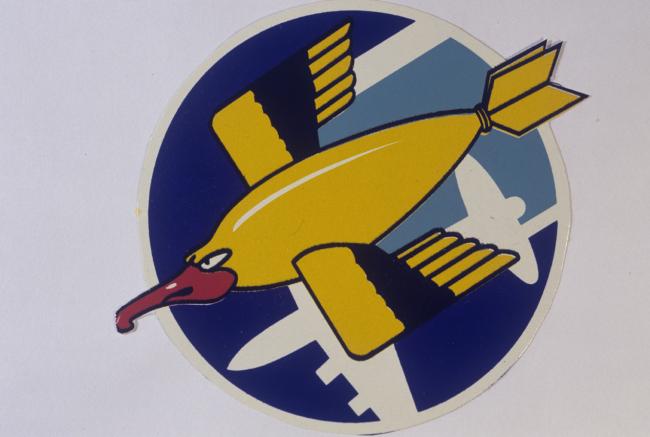
- Unit Hierarchy: Group
- Air Force: Eighth Air Force
- Type Category: Bombardment

- Unit Hierarchy: Group
- Air Force: Eighth Air Force
- Type Category: Bombardment
Mission Statistics
- People killed in action: 12
- People wounded in action: 10
- People evaded: 14
- Prisoners of war: 28
- People returned to duty: 16
- Enemy aircrafts destroyed by bomber: 3
- Enemy aircrafts probably destroyed by bomber: 3
- Enemy aircraft damaged by bomber: 3
- Aircraft sent: 73
- Aircraft effective: 40
- Aircraft missing in action: 5
- Aircraft damaged beyond repair: 2
- Aircraft damaged: 29
Description: AIRFIELD
Aircraft Type: B-24 Liberator

- Unit Hierarchy: Group
- Air Force: Eighth Air Force
- Type Category: Bombardment

- Unit Hierarchy: Group
- Air Force: Eighth Air Force
- Type Category: Bombardment

- Unit Hierarchy: Group
- Air Force: Eighth Air Force
- Type Category: Bombardment
Mission Statistics
- People killed in action: 30
- People wounded in action: 2
- People evaded: 2
- Prisoners of war: 17
- People returned to duty: 30
- Aircraft sent: 42
- Aircraft effective: 38
- Aircraft missing in action: 5
- Aircraft damaged beyond repair: 3
- Aircraft damaged: 5
Description: AIRFIELD
Aircraft Type: B-17 Flying Fortress
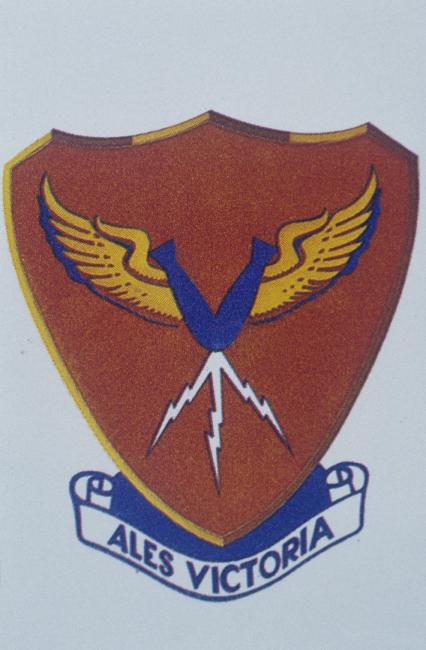
- Unit Hierarchy: Group
- Air Force: Eighth Air Force
- Type Category: Bombardment
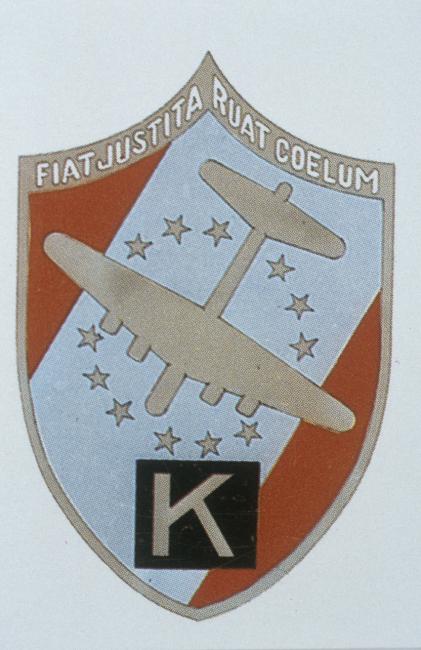
- Unit Hierarchy: Group
- Air Force: Eighth Air Force
- Type Category: Bombardment

- Unit Hierarchy: Group
- Air Force: Eighth Air Force
- Type Category: Bombardment
Mission Statistics
- People killed in action: 10
- People evaded: 7
- Prisoners of war: 14
- Enemy aircrafts destroyed by bomber: 8
- Enemy aircrafts probably destroyed by bomber: 9
- Enemy aircraft damaged by bomber: 14
- Aircraft sent: 61
- Aircraft effective: 61
- Aircraft missing in action: 3
- Aircraft damaged: 36
Description: AIRFIELD
Aircraft Type: B-17 Flying Fortress

- Unit Hierarchy: Group
- Air Force: Eighth Air Force
- Type Category: Bombardment

- Unit Hierarchy: Group
- Air Force: Eighth Air Force
- Type Category: Bombardment

- Unit Hierarchy: Group
- Air Force: Eighth Air Force
- Type Category: Bombardment

- Unit Hierarchy: Group
- Air Force: Eighth Air Force
- Type Category: Bombardment
Mission Statistics
- People killed in action: 35
- People wounded in action: 19
- People evaded: 15
- Prisoners of war: 51
- People returned to duty: 51
- Aircraft sent: 102
- Aircraft effective: 99
- Aircraft missing in action: 10
- Aircraft damaged beyond repair: 5
- Aircraft damaged: 38
Description: SHIPPING ATTACK
Aircraft Type: B-17 Flying Fortress
Notes: Blockade running ship was the targeted but clouds prevented target acquisition.

- Unit Hierarchy: Group
- Air Force: Eighth Air Force
- Type Category: Bombardment
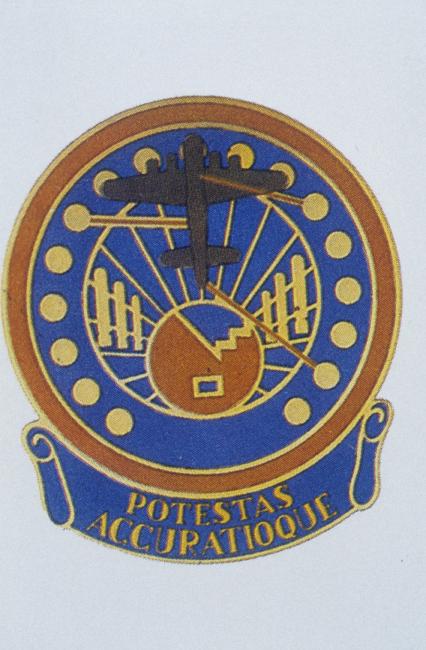
- Unit Hierarchy: Group
- Air Force: Eighth Air Force
- Type Category: Bombardment

- Unit Hierarchy: Group
- Air Force: Eighth Air Force
- Type Category: Bombardment
Mission Statistics
- Tonnage Dropped: 0.00
- People killed in action: 2
- People wounded in action: 5
- People returned to duty: 30
- Aircraft sent: 57
- Aircraft missing in action: 1
- Aircraft damaged beyond repair: 2
- Aircraft damaged: 3
Description: AIRFIELD
Aircraft Type: B-17 Flying Fortress

- Unit Hierarchy: Group
- Air Force: Eighth Air Force
- Type Category: Bombardment
Mission Statistics
- Aircraft sent: 18
- Aircraft effective: 18
- Aircraft damaged: 5
PARIS - IVRY (Primary)
Description: INDUSTRIAL AREA
Aircraft Type: B-17 Flying Fortress
![Three airmen of the 100th Bomb Group, Lieutenant Kenneth Menzie, Lieutenant Donald Strout and Lieutenant Norman Scott, plan the route they will take during the next mission in their B-17 Flying Fortress (serial number 42-30380). Image stamped on reverse: 'Reviewed and passed U.S. Army 23 Aug 1943 Press Censor E.T.O. U.S.A.' [stamp]'. Passed for publication 23 August 1943 INTLD 16 General Section Press Censorship Bureau '[stamp], 'Associated Press' [stamp] and '280035.' [Censor no.] Printed caption on reve](https://assets.americanairmuseum.com/s3fs-public/styles/max_650x650/public/freeman/media-378743.jpg?itok=oPPVVi6c)
- Unit Hierarchy: Group
- Air Force: Eighth Air Force
- Type Category: Bombardment
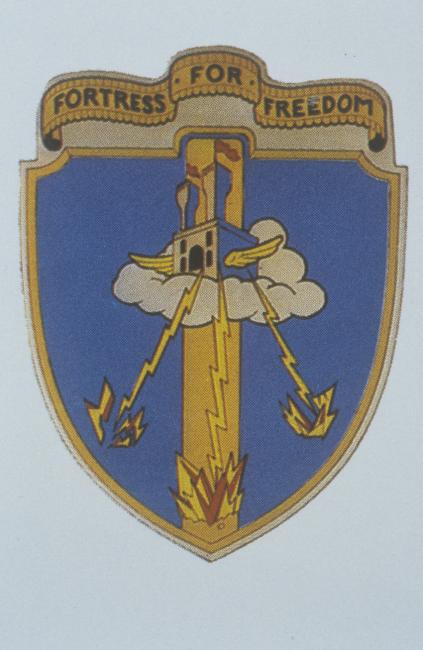
- Unit Hierarchy: Group
- Air Force: Eighth Air Force
- Type Category: Bombardment

- Unit Hierarchy: Group
- Air Force: Eighth Air Force
- Type Category: Bombardment
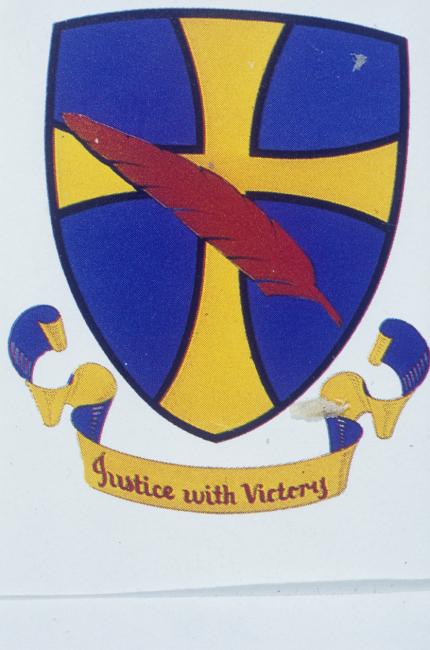
- Unit Hierarchy: Group
- Air Force: Eighth Air Force
- Type Category: Bombardment

- Unit Hierarchy: Group
- Air Force: Eighth Air Force
- Type Category: Bombardment
Mission Statistics
- Tonnage Dropped: 285.22
- People killed in action: 10
- People wounded in action: 2
- People returned to duty: 10
- Aircraft sent: 103
- Aircraft effective: 98
- Aircraft missing in action: 1
- Aircraft damaged beyond repair: 1
- Aircraft damaged: 49
ST. JEAN D'ANGELY
Description: AIRFIELD
Aircraft Type: B-24 Liberator

- Unit Hierarchy: Group
- Air Force: Eighth Air Force
- Type Category: Bombardment

- Unit Hierarchy: Group
- Air Force: Eighth Air Force
- Type Category: Bombardment
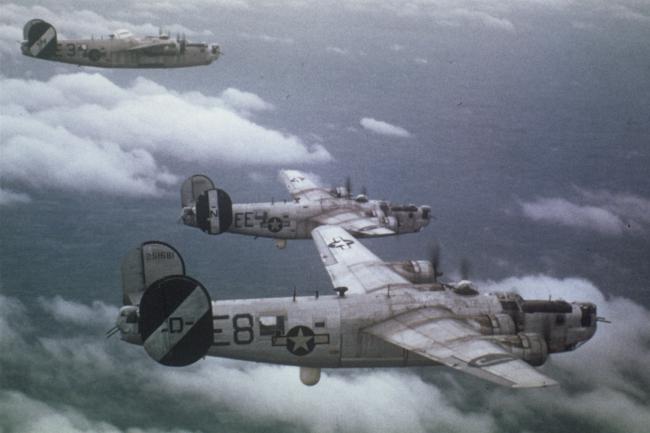
- Unit Hierarchy: Group
- Air Force: Eighth Air Force
- Type Category: Bombardment

- Unit Hierarchy: Group
- Air Force: Eighth Air Force
- Type Category: Bombardment
Mission Statistics
- Tonnage Dropped: 181.85
- People killed in action: 9
- Prisoners of war: 1
- People returned to duty: 20
- Enemy aircrafts destroyed by bomber: 9
- Enemy aircrafts probably destroyed by bomber: 1
- Enemy aircraft damaged by bomber: 1
- Aircraft sent: 94
- Aircraft effective: 87
- Aircraft missing in action: 1
- Aircraft damaged beyond repair: 2
- Aircraft damaged: 5
Connections
See how this entry relates to other items in the archive by exploring the connections below.
People
- Military/Civilian/Mascot: Military
- Nationality: American
- Unit: 384th Bomb Group 544th Bomb Squadron
- Service Numbers: O-798297
- Highest Rank: First Lieutenant
- Role/Job: Pilot

- Military/Civilian/Mascot: Military
- Nationality: American
- Unit: 381st Bomb Group 533rd Bomb Squadron
- Service Numbers: O-809475
- Highest Rank: Second Lieutenant
- Role/Job: Navigator

- Military/Civilian/Mascot: Military
- Nationality: American
- Unit: 351st Bomb Group 510th Bomb Squadron
- Service Numbers: 14084440
- Highest Rank: Staff Sergeant
- Role/Job: Engineer / Top Turret Gunner

- Military/Civilian/Mascot: Military
- Nationality: American
- Unit: 401st Bomb Group 613th Bomb Squadron
- Service Numbers: 35368934
- Highest Rank: Technician Fourth Grade
- Role/Job: waist gunner

- Military/Civilian/Mascot: Military
- Nationality: American
- Unit: 388th Bomb Group 560th Bomb Squadron
- Service Numbers: 16066310 / O-735023
- Highest Rank: Captain
- Role/Job: Pilot
Aircraft

- Aircraft Type: B-17 Flying Fortress
- Nicknames: What's Cookin' Doc
- Unit: 384th Bomb Group 547th Bomb Squadron 305th Bomb Group 422nd Bomb Squadron

- Aircraft Type: B-17 Flying Fortress
- Nicknames: Little Audrey
- Unit: 306th Bomb Group 384th Bomb Group Base Air Depot 1 368th Bomb Squadron 544th Bomb Squadron

- Aircraft Type: B-17 Flying Fortress
- Nicknames: The Duchess, Sure Stuff
- Unit: 303rd Bomb Group 359th Bomb Squadron

- Aircraft Type: B-17 Flying Fortress
- Nicknames: Problem Child : Old Reliable
- Unit: Base Air Depot 1 547th Bomb Squadron 384th Bomb Group 305th Bomb Group 367th Bomb Squadron

- Aircraft Type: B-17 Flying Fortress
- Nicknames: Cased Ace
- Unit: 384th Bomb Group 545th Bomb Squadron 305th Bomb Group 422nd Bomb Squadron
Revisions
Lee Cunningham 28-Jul-2015. Added bomber gunener claims to St. Jean element statistics per "The Mighty Eight War Diary", Roger A, Freeman.
Lee Cunningham 28-Jul-2015. Corrected error in statistic for 2nd BD.
Lee Cunningham 28-Jul-2015. Added bomber gunener claims to 3RD BD Cognac element statistics per "The Mighty Eight War Diary", Roger A, Freeman.
Lee Cunningham 28-Jul-2015. Added bomber gunener claims to 2nd BD Cognac element statistics per "The Mighty Eight War Diary", Roger A, Freeman.
Lee Cunningham 28-Jul-2015. Added bomber gunener claims to Bordeaux element statistics per "The Mighty Eight War Diary", Roger A, Freeman.
Lee Cunningham 28-Jul-43. 1943 loss statisitcs and percentages in Mission Narrative based on the database of Mr. Lee Cunnigham complied from NARA loss records; Added Mission Narrative of elements based on "The Mighty Eighth War Dairy", Roger A. Freeman.
Lee Cunningham, 8th Air Force missions research database / Stan Bishop's 'Losses of the US 8th and 9th Air Forces', the Combat Chronology of the US Army Air Forces and the work of Roger Freeman including the 'Mighty Eighth War Diary'.



